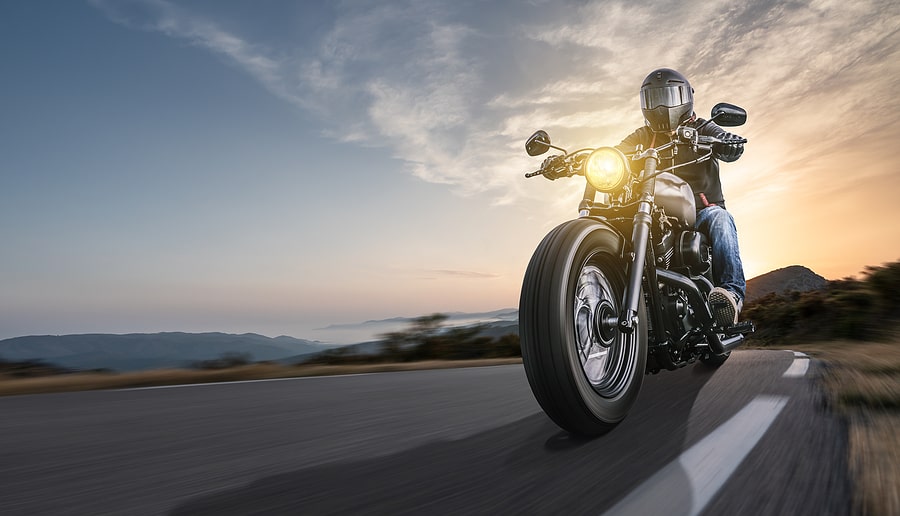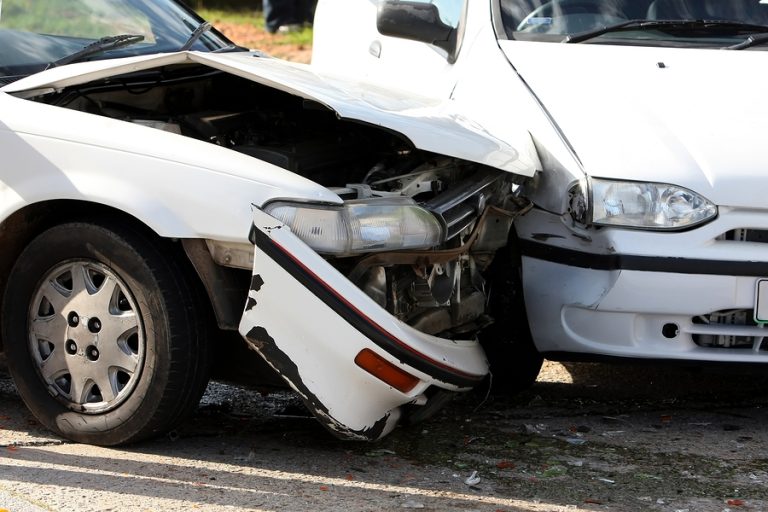
For many people interested in riding a motorcycle in California, a California motorcycle permit can offer a great deal of freedom and excitement. Once you climb on your motorcycle, you can feel the wind rushing through your hair, enjoy the thrill of the open road, and even get around while using less gas than you would if you took a larger vehicle.
To ride a motorcycle in California, however, you will need to follow the right steps to secure your license.
How to Secure a Motorcycle Permit in California
In California, motorcyclists must have reached at least 15 ½ years old. To acquire a motorcycle license, the rider must either already have a California driver’s license or submit proof that the driver has completed a driver’s education or training course, which will prove that the motorcycle rider can safely ride a motorcycle. To get a California motorcycle permit, you will need to:
#1. Take (and pass) a California Motorcyclist Safety Program (CMSP) training course, if under 21.
Motorcycle applicants under 21 years of old must go through the motorcyclist safety program in California before acquiring a permit. The course highlights the critical safety difference between the “right way and the wrong way to ride,” and notes that it can make a huge difference in the overall skill level of the rider. A rider with adequate safety training can more safely navigate challenges out on the streets of California, decreasing the risk that they will end up involved in a serious accident.
While riders over the age of 21 do not have to take the safety course, California strongly recommends that all riders take the course before applying for a motorcycle license or permit.
#2. Pass a knowledge skills test.
To get your M1 or M2 permit, you will need to show that you have the skills necessary to safely ride your motorcycle. The written test can help determine that knowledge. Motorcycle permit applicants will need to pass both a driver written test and a motorcycle written test, since motorcycle riders need to understand the rules that govern passenger vehicles in California.
#3. Designate the type of permit you need.
California has two classes of motorcycle licenses: M1 and M2. An M1 permit allows the license holder to operate almost any vehicle with two wheels, including motorized bicycles, motorcycles, motorized scooters, or mopeds. An M2 permit, on the other hand, more strictly restricts the vehicles a permit holder can drive: M2 permit holders can only drive motorized bicycles, mopeds, or motorized scooters, which usually move at much slower speeds than motorcycles.
#4. Follow the necessary steps to register with the California DMV.
Riders will need to complete a vision test, submit the DL 44 application form, and have their picture taken. They may also need to submit a thumbprint for the state’s record. Furthermore, permit holders will need to pass a vision test that will show that they can see what happens around them on the road. You may need to make an appointment with the DMV ahead of time to get a motorcycle license, so make sure you contact the DMV ahead of time.
Motorcycle Permit Law in California
Motorcycle permit holders in California must adhere to the same rules and regulations that drivers who hold motorcycle licenses must follow but may also need to adhere to some additional restrictions until they obtain a full motorcycle license.
#1. Permit holders cannot carry passengers.
While many motorcycles can safely carry passengers, motorcycle permit holders cannot take passengers with them on their motorcycles. Permit holders should, instead, ride by themselves until they have a chance to obtain a full motorcycle license.
#2. Permit holders should not ride at night.
Night driving can increase glare and make it much more difficult for drivers to navigate safely. Not only can it increase the difficulty level for motorcycle permit holders who may not yet have the experience to navigate safely at night, but the drivers of passenger vehicles may also have a much harder time seeing motorcycles, which increases the risk of an accident. As a result, permit holders should end their drive before night.
#3. Permit holders cannot drive on the freeway.
On the freeway, drivers travel at high rates of speed and may drive more aggressively than in other locations. Since permit holders may not have the skills necessary to navigate under those circumstances yet, California law prevents them from driving on the freeway.
#4. Permit holders may need to spend at least six months with their permits before they can move forward to an official motorcycle license.
After six months, permit holders will need to pass the skills test for motorcycle riders, which may involve relevant skills to help the driver. If permit holders do not feel ready to pass the skills test, they can hold a permit for up to twelve months after the date of issue. During the skills test, motorcycle riders will face:
#4.1. A pre-trip inspection that determines the rider’s ability to identify key parts of the motorcycle.
Riders may need to find the starter, clutch, and throttle as well as items like the brakes and turn signals, all of which can be vital to operating a motorcycle safely on the road.
#4.2. Riding in specific patterns that show the rider’s ability to navigate safely on the road.
The tester may require the driver to ride down specific paths, conduct a serpentine ride, or ride in a circle. In addition, the rider may need to show their ability to ride at slow speeds.
#4.3. Showing skills on the road, for riders who do not have another kind of license.
Riders who have never driven on the road before will need to have their riding observed by an examiner, who can determine whether the rider has the skills necessary to operate the motorcycle safely on the road.
Riders may have just three chances to pass the skills test to achieve a motorcycle license. A driver who cannot pass the test despite multiple attempts may lose the ability to apply for a motorcycle license in California.
California Motorcycle Laws
In addition to adhering to specific restrictions based on their lack of experience on the road, California motorcycle permit holders must also adhere to the same rules and regulations as other California riders. A strong understanding of those regulations can help keep California motorcycle permit holders safe and decrease the risk of accidents. When in doubt, riders should consult the California motorcycle handbook for more information about the specific laws they need to follow.
In addition, California motorcycle permit holders should keep in mind that they must adhere to the same rules of the road as the average passenger vehicle driver, including speed limits, right of way, and response to traffic signals.
#1. California riders must wear a helmet at all times to operate a motorcycle.
The motorcycle helmet must meet DOT compliance standards. Failure to wear a motorcycle helmet can substantially increase the risk of traumatic brain injury or even death in a motorcycle accident. California law penalizes any driver who fails to wear a helmet, including riders over the age of 21, who may have the right to choose to ride without a helmet in other states.
Furthermore, California regulations “highly suggest” that riders wear other protective gear, including face protection, eye protection, and proper protective apparel that can help reduce injury in the event of an accident.
Proper safety gear can go a long way toward reducing injuries. Wearing face and eye protection, for example, can help reduce the risk of facial injuries or even potential blindness, while wearing long sleeves can help reduce the risk of road rash.
#2. Riders should choose a motorcycle that “fits” their body type and size.
To safely operate a motorcycle, your feet need to reach the ground comfortably when you seat yourself on the motorcycle. If your feet do not reach the ground, you may find yourself struggling to control the motorcycle at slow speeds or have an increased risk of turning the motorcycle over in case of a potential accident. The California Motorcycle Handbook notes that riders should make sure they fit comfortably on a motorcycle before going out for a ride.
#3. California motorcycle riders can legally split lanes.
Splitting lanes involves driving between two lanes of traffic, usually when traffic moves slowly or stops completely. California does allow lane splitting in some circumstances, especially when traffic comes to a stop and motorcycle riders can safely move through traffic, getting to their destination faster and alleviating some of the strain of a traffic jam.
However, the California Motorcycle Handbook does recommend lane splitting only in rare circumstances, and exercising extreme caution while splitting lanes. Lane splitting can significantly raise the risk of an accident, particularly if the drivers of passenger vehicles do not note the presence of a lane-splitting motorcycle.
Since motorcycles can legally split lanes, it also opens the door for the drivers of passenger vehicles to move into a lane occupied by a motorcycle, which can be extremely dangerous. In most cases, drivers should allow any other vehicle to occupy an entire lane, even when it seems inconvenient.
#4. California motorcycle riders must only ride motorcycles that fit the state’s criteria.
Motorcycles must have both right and left mirrors to improve visibility for motorcycle riders and make it easier for them to keep track of what happens around them on the road. They must also have working turn signals on all motorcycles registered for the first time since January 1973 or later. Furthermore, motorcycle riders may need to pay careful attention to their handlebars, which should keep the driver’s hands six inches or less above shoulder height when the driver sits in the motorcycle’s seat. A motorcycle that fails to fit these standards may have safety challenges that can increase the risk of an accident, and motorcycle riders should not drive them.
#5. Once motorcycle riders in California acquire their license, they can carry passengers.
California law does not set an age restriction on passengers, so passengers of any age can ride on a motorcycle with a licensed driver. However, to ride on a motorcycle, the passenger must have their own seat, securely fastened to the motorcycle. Passengers must also have footrests and use those footrests while the motorcycle remains in motion. In some cases, these restrictions may make it more difficult for young children to ride on a motorcycle. Children should not ride a motorcycle until they can comply with basic safety rules.
#6. Motorcycle riders must carry the same insurance as any other driver to protect others in the event of an accident.
Motorcycle riders, like other riders, must carry liability insurance that will pay out if the rider’s negligence causes an accident. Liability insurance does not protect the rider, but does offer compensation for property damage or bodily injury to the victim of that negligence.
Some riders may also want to consider carrying higher-value insurance, including collision coverage or comprehensive coverage, to help ensure that they have adequate protection to repair or replace the motorcycle in the event of an accident. California MedPay insurance can also be vital in an accident since it will provide much-needed payments for medical bills following a serious accident.
Do You Have Questions About Motorcycle Insurance or What To Do After a Motorcycle Accident?
If you suffer injuries in a motorcycle accident or want to know what protection you might have if you do suffer injuries in a motorcycle accident, a motorcycle accident lawyer can help. Contact a lawyer to learn more about your right to compensation after an accident.







